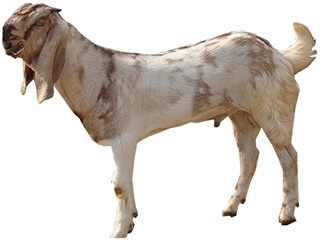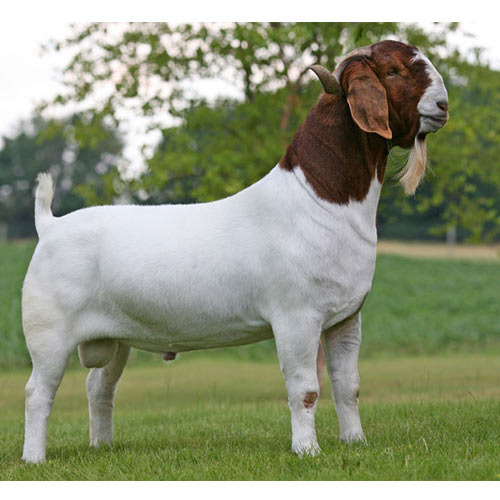Hey new farmers,
Are you looking for an organized basic guide on Black Bengal goat farming?
This article gives you an overall idea about goat farming and the following topic.
Why Should You Start Goat Farming?
Black Bengail goat farm doesn’t require lots of capital. And the return on investment is higher compared to other farms.
As a new, you can start farming with 5 to 10 goats. A small amount of goats can be managed easily and don’t need a huge investment.
As your experience grows you can add goats accordingly.
Here is a fact: Black Bengal goats can breed 2 to 4 child goats at once. And 2 times in a year.
For example: if you have 4 goats and they breed 2 goats on average you will get 16 goats in a year. So you can calculate the price based on your market.
Some Disadvantages Of Black Bengal Goat
- Limited Milk Production
Black Bengal goats typically have lower milk production than breeds.
It may not be sufficient for large-scale milk production.
That’s why most farmers choose black Bengal only for meat production.
2. Can’t survive in cool weather
This goat can’t survive in extremely cool climates. so make sure your location is not too cool.
3. Small Body Size
Black Bengal goats are small in size compared to some other goats.
The average weight of goats is 25 to 30 kg.
So you can not expect lots of meat production from it.
It’s better to keep real expectations.
Now pay close attention to picking the right black Bengal breed.
Black Bengal Goat Breeds & Characteristics
Appearance
Color: Black Bengal goats are primarily black. But sometimes they may have white color markings on the face and body.
Height: The average height of a black Bengal goat is between 1.4 to 1.8 feet (17 to 21 inches). And a width of 1.5 to 2 feet (18 to 24 inches).
Weight: The average weight of adult male goats is between 25-30 kg and adult females 20-25 kg.
Adaptability
Medium-hot climates are suitable for black Bengal goats. They can survive in hush climates compared to other breeds.
But don’t forget black Bengal can’t tolerate extremely cold climates.
So for example: regions like Bangladesh, India, and parts of Southeast Asia have perfect weather for black Bengal goats.
Reproductive Efficiency
Black Bengal goats have high reproductive efficiency. They have a short breeding cycle.
Goat becomes mature at around 6-8 months of age.
Black Bengals breed 2 to 4 kids at once. And two times in a year.
Meat Quality
Black Bengal goat meat is relatively lean compared to other types of meat.
This meat has good demand in the local market and the price is high compared to other meats.
Skin Quality
This goat has high-quality skin which is very suitable for leather products.
And especially, Goat skills are more in demand in developed countries.
Maintenance
You don’t have to spend much on maintenance for this goat. Black Bengal goats are relatively low-maintenance compared to some other goat breeds.
They can easily survive with a minimum diet.
And they have a good immune system that helps to resist too many common diseases.
How to Choose Black Bengal Breed
Here you can follow some processes to select the right black Bengal goats for your farm.
Genetic Background
You know what: one of the hardest and most important parts is finding a goat with good genetics.
A strong genetic background helps to fight common diseases. And contribute to the improvement of meat and milk production.
So as a new farmer, you must find good genetic goats.
Body Structure
For meat production: a goat should have a sturdy, muscular build body.
You also can consider it as:
- Fast growth rates,
- Good feed conversion efficiency,
- And high meat-to-bone ratio.
Reproductive Performance
As we all know: nothing is better than finding a good reproductive breed.
High reproductive goats will maximize productivity and profitability in meat production.
Here you can consider a good one by measuring with
→ Fertility
→ Kidding rate,
→ And mothering ability.
Temperament and Behavior
By nature, black Bengal goats are well-mannered and cool-tempered.
They are socially active and get into a mess easily.
Health and Disease Resistance
Healthy goats have a direct impact on profitability. You should find a breed with a history of good health and disease resistance. Mostly, it depends on good genetics.
Right Location For Goat Farming
Climate and Environment
Bengal goats are well-adapted to hot and humid climates.
On the other hand, they can’t tolerate extreme weather conditions.
For example: cold weather, heavy rainfall, and high humidity levels can negatively impact goat health.
Availability of Land
You must have ample grazing land.
The land should be sufficient to accommodate the size of the goat to prevent issues.
Access to Water
Water is very important for Bengal goats.
You have to ensure that your chosen location has reliable access to clean and fresh water.
You can consider places like rivers, streams, or ponds.
Or you can install wells or water storage systems to meet the water needs of your goat.
Easily communication
Consider a place where you can easily market goat products such as meat, milk, and skin.
Remember: If your market is not consuming goat products then it may be not well place for farming.
Design Housing For Black Bengal Goats
For space, protection from weather, and security. You must have to ensure good shelter.
Here’s a general guide for each aspect:
Shelters
Size: Provide at least 15 to 20 square feet per adult goat to have enough space to move around comfortably.
Ventilation: Ensure good ventilation to prevent the buildup of humidity and ammonia fumes.
Protection: Make shelters with sturdy walls and roofs to protect the goats from rain, wind, and extreme temperatures.
Bedding: You can use soft bedding materials such as straw or wood shavings to provide insulation and comfort.
Pens
Space Requirements: Provide at least 15 to 20 square feet per adult goat to ensure they have enough space to move around comfortably.
Shade: Ensure the pen has shaded areas, especially in hot climates, to protect the goats from direct sunlight.
Drainage: Make sure you have proper drainage to prevent waterlogging, which can lead to health issues for the goats.
Fencing
Height: Fencing should be at least 4 to 5 feet tall to prevent goats from jumping over.
Material: Use sturdy materials such as woven wire, chain-link, or welded wire mesh to withstand the pressure from goats leaning or rubbing against it.
Gaps: Ensure there are no gaps or spaces large enough for goats to squeeze through.
Durability: Regularly inspect and maintain fencing to repair any damages promptly.
Note: it’s essential to design pens, shelters, and fencing in a way that allows for easy management, such as feeding, watering, and cleaning.
Keep in mind: Proper planning and maintenance are crucial to ensure good health and well-being of Black Bengal goats.
Best way is: to consult with experienced goat farmers or agricultural to get valuable insights and recommendations for designing the perfect shelter.
Food to meet Nutrition
Grasses: Common grasses such as Bermuda grass, Para grass, Napier grass, and Alfalfa are suitable for Black Bengal goats. Grasses provide fiber, energy, vitamins, and some protein.
Legumes: Leguminous forages like Alfalfa, and Clover are rich in protein, minerals, and vitamins. These are excellent supplements for goats, especially for lactation or growth.
Corn: Whole or cracked corn is a popular energy source for Black Bengal goats. It provides carbohydrates and calories.
However, you should moderate corn to prevent obesity and digestive issues.
Oats: Oats are a good source of energy, protein, and fiber for goats. Whole oats or rolled oats can be fed as part of a balanced diet for goats of all ages.
Barley: Barley is another energy-rich grain option for goats, providing carbohydrates and protein. It can be fed whole or as part of a mixed grain ration.
Wheat: Whole or cracked wheat can be fed to goats as a supplemental energy source, but it should be limited to prevent digestive problems.
Read carefully, this is the most important part of becoming a successful farmer.
We will see how we can prevent disease.




Pingback: Best Grass For Goats (Beginner guide) - FarmNity